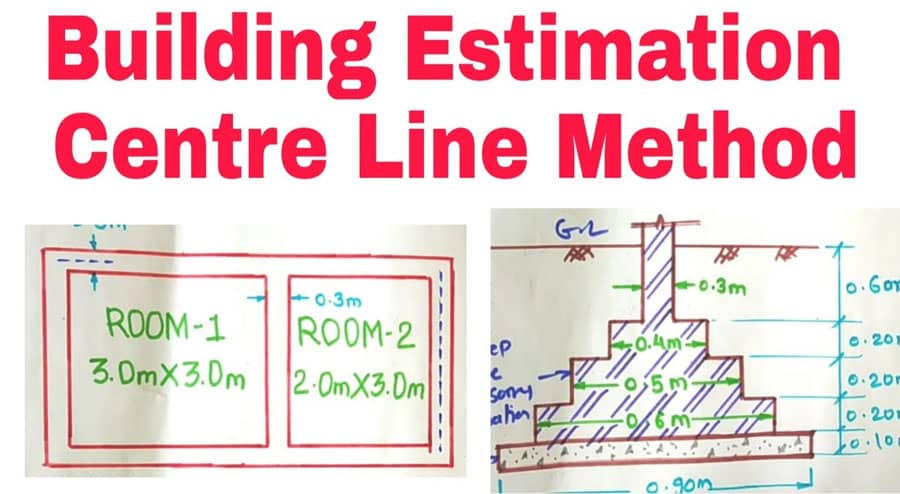How to Apply the Center Line Method for Building Estimation

Introduction
Accurate estimation of quantities is essential in construction projects to determine material requirements and associated costs. The center line method is a commonly used technique for building estimation. It involves establishing a center line and measuring distances from it to determine quantities of various components.
Overview of the Center Line Method
The center line method involves using a reference line, known as the center line, to measure distances and calculate quantities of various building components. This method is particularly useful for linear structures such as walls, beams, columns, and pipes.
By establishing a center line, measurements can be taken from this reference point to both sides of the structure, allowing for accurate estimation of quantities. The center line also helps in maintaining alignment and symmetry during construction.
Steps to Apply the Center Line Method for Building Estimation
To apply the center line method for building estimation, the following steps can be followed:
Determine the Building Layout
Before starting the estimation process, it is important to have a clear understanding of the building layout. This includes identifying the walls, beams, columns, and other structural components that will be measured using the center line method.
Identify the Center Line
Once the building layout is established, identify the center line for each component. The center line is typically the reference line from which measurements will be taken. It should be drawn accurately and maintained throughout the estimation process.
Measure Lengths and Areas
Using the center line as a reference, measure the lengths of walls, beams, columns, and other linear components. In the case of walls, measure the length along the center line. For beams and columns, measure the lengths along the center line as well as the cross-sectional dimensions.
For areas, measure the width perpendicular to the center line and multiply it by the length to obtain the total area.
Calculate Quantities
Once the measurements are obtained, calculate the quantities of the various components. Multiply the lengths by the corresponding cross-sectional dimensions to determine the volume of materials required. Multiply the areas by the corresponding thickness to calculate the quantity of surface finishes or coatings needed.
Advantages of the Center Line Method
The center line method offers several advantages for building estimation:
- Simplicity: The method is relatively simple to understand and apply, making it accessible to estimators at various skill levels.
- Accuracy: By measuring from a consistent center line, the method provides accurate quantities, reducing the chances of over or underestimation.
- Alignment and Symmetry: The center line helps maintain alignment and symmetry during construction, resulting in visually appealing structures.
Limitations of the Center Line Method
While the center line method is useful, it does have some limitations:
- Limited to Linear Structures: The method is most suitable for linear structures such as walls, beams, columns, and pipes. It may not be as effective for irregular or complex shapes.
- Dependent on Accuracy of Center Line: The accuracy of the measurements and quantities obtained using the center line method relies on the precise establishment and maintenance of the center line throughout the estimation process. Any errors or deviations in the center line can lead to inaccuracies in the final quantities.
- Excludes Non-linear Components: The center line method is not applicable to non-linear components such as curved walls or irregularly shaped structures. Estimating quantities for such elements requires alternative methods.
Conclusion
The center line method is a practical and effective technique for building estimation, particularly for linear structures. By establishing a center line and measuring distances from it, estimators can accurately determine quantities of walls, beams, columns, and other linear components. The method offers simplicity, accuracy, and helps maintain alignment and symmetry during construction. However, it is limited to linear structures and relies on the precise establishment of the center line. Estimators should be aware of these limitations and use alternative methods for estimating quantities of irregular or non-linear components.
For more information, please watch the video tutorial
